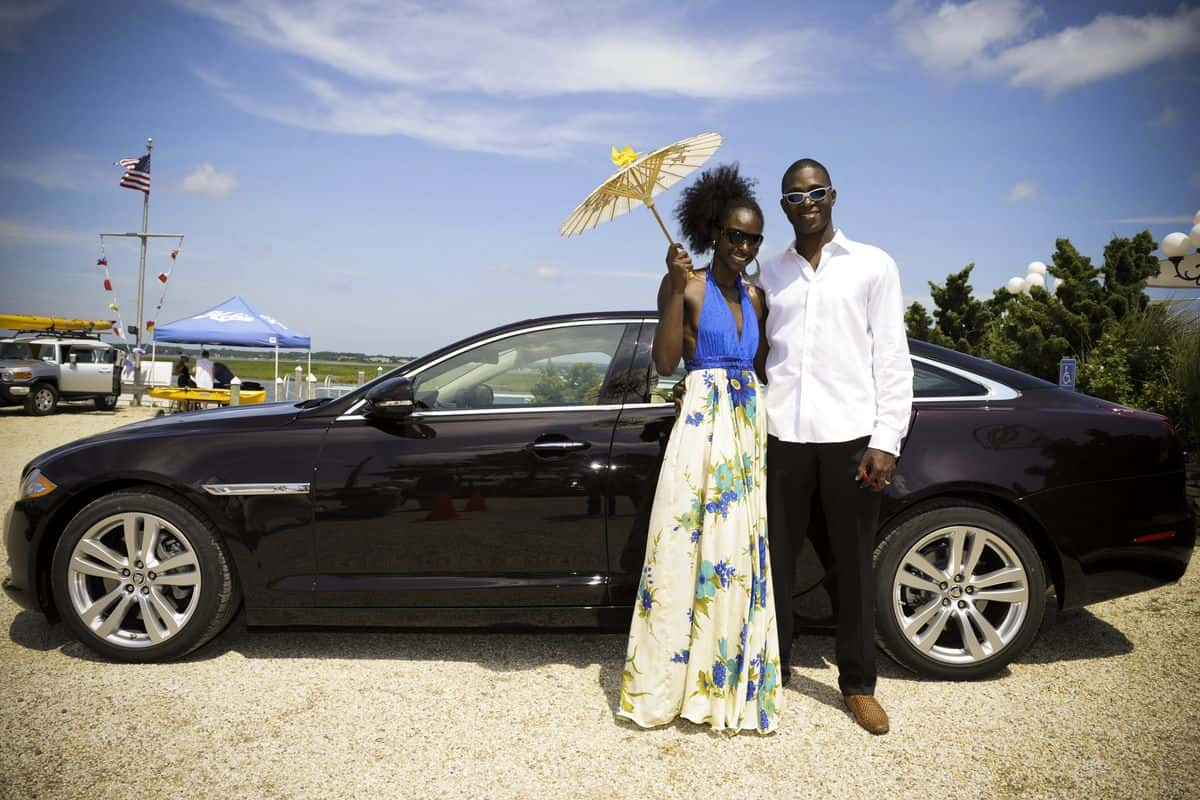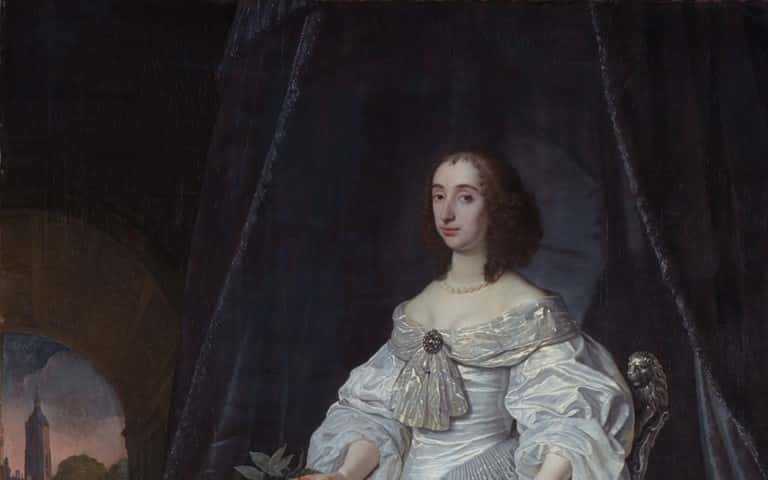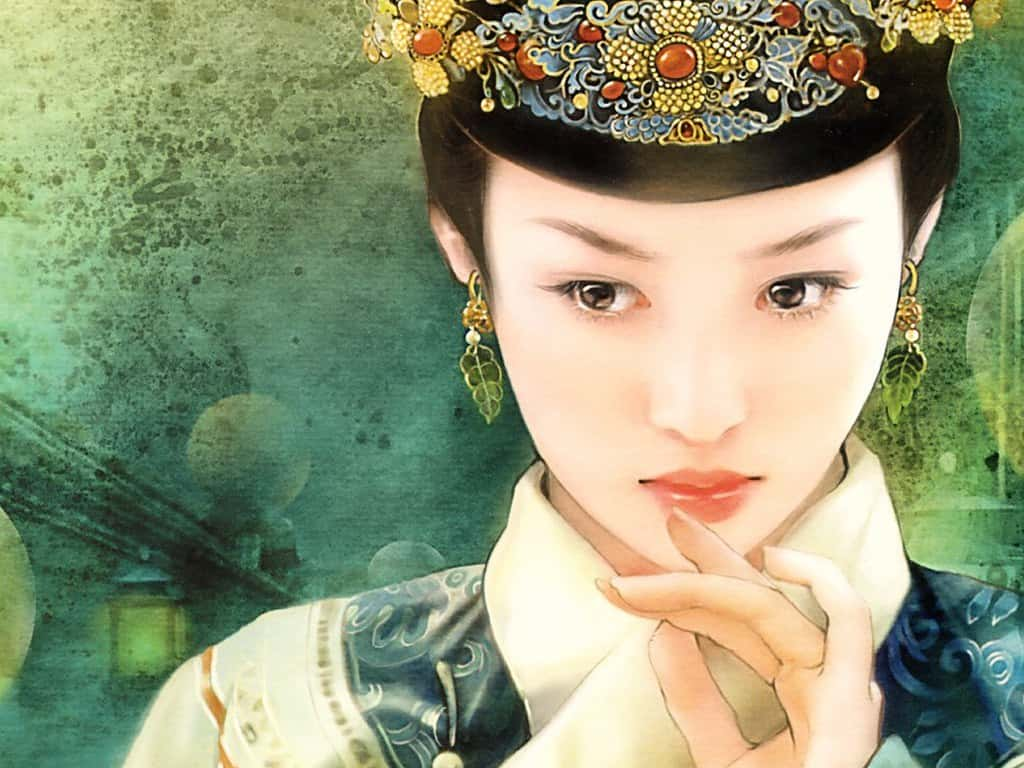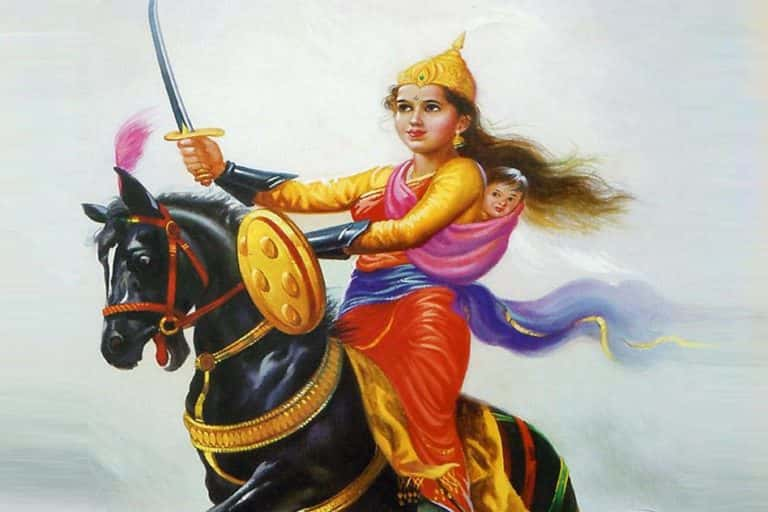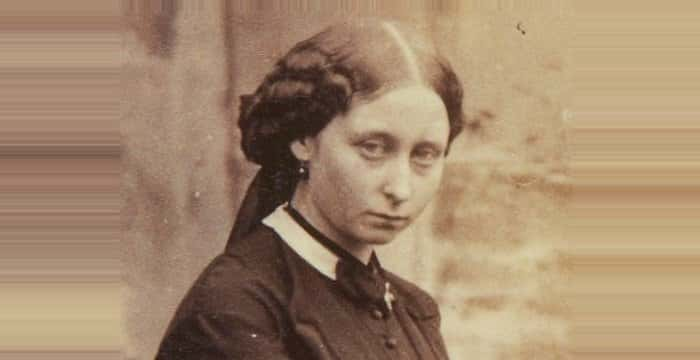“I do not want to be treated like a princess, I just want to be loved.”—Pushpa Rana.
The word “Princess” is more than a title. It’s a declaration of privilege and status and a callback to a (seemingly) antiquated system of government. It’s also a huge brand; who among us hasn’t been swallowed up by the songs, movies, and merchandise of the Disney Princess franchise? What little girl doesn’t want to be a princess? After all, being waited upon and born “special” is a fantasy in which everyone—regardless of age or gender—has indulged at least once in their lives. One way or another, we eat princesses up.
Despite our obsessions with the long history of princesses, the title of “princess” is actually a pretty new invention in the big picture of time. Yet simultaneously, to lend esteem to a ruler’s daughter has never been specific to European culture. Simply put, there is no one way to be a princess. Witness how true that is to 42 graceful facts about modern and historical princesses.

Princesses Facts
42. Best Royal Actress
Grace Kelly remains the only princess ever to win an Oscar—at least until Meghan Markle decides to come out of retirement and go for that gold.
41. The Princesses That Were
As the youngest daughter of the deposed King James II of England, Princess Louisa Maria Stuart was a target for poetic lamentation. Her death at the age of 19 inspired flourishing letters from her sister, Queen Anne, and also Madame de Maintenon, the unofficial wife of Louis XIV of France. She was known, romantically, as “the Princess of the Water,” in reference to the “King over the Water” which was informally conferred to the deposed heirs of her father.
40. Short but Sweet
Raziya Sultana is the only Muslim princess to ever ascend to the Delhi Sultanate. Her reign (1236–1240), while short, was characterized by her deep and sincere interest in her subjects’ welfare. But this was not to last; her half-brother, Muiz ud din Bahram, usurped her throne and she perished in battle against him. But she died, at least, alongside her lifelong childhood-friend-turned-husband, Malik Ikhtiar-ud-din Altunia. It’s cold comfort, but good stuff for legend.
39. Adultery, Served Well-Done
According to legend, Princess Joanna of Wales burned the bed in which she caught her husband with another woman. Did we mention she was only 14 years old at the time?
38. Locks of Love
Princess Keisha Omilana of Nigeria’s life has some parallels to Meghan Markle—both were African-American actresses who married into royalty. But unlike Markle, Omilana starred in three consecutive television ad campaigns for Pantene, thereby becoming the first African-American woman to do so. After she married Prince Kunle, Keisha continues to work in the beauty industry; her organization, A Crown of Curls, offers education for Afro-textured haired women on how to tend to their uniquely beautiful locks.
37. Princess Power Up
Princess Abzeita Djigma of Burkina Faso is modern-day royal who descended from a legendary Mossi warrior. Oh, she’s also the head of her own solar power company called AbzeSolar. In addition to providing street lights, portable reading lamps, and solar heaters for communities, the princess’s company also provides technical education on solar products to communities, so the 620 million people without power in sub-Saharan Africa can have some agency in seeing the light.
 Youtube
Youtube
36. Not A Title as Old as Time
The word “princess” only showed in writing as early as 1385. Chaucer’s The Knight’s Tale contains the first recorded use of princess. Beforehand, daughters of the king were simply titled “Lady.”
35. Keeping Up with the Jacques
Sure, anyone can be a princess. But not unlike Highlanders, there can only be one “Princess Royal,” which is the title conferred to the oldest daughter of the reigning monarch. The origin of the term comes from a proud English tradition: wanting to one-up the French. In 1672, the English queen consort Henrietta Maria wanted an English version of the way the French would the King’s eldest daughter as “Madame Royale” (the queen was also French). Her husband King Charles I of England innovated the title of “Princess Royal” for their eldest daughter, Mary.
34. Walk Like a Princess
Princess Alexandra of Wales was born in Denmark with a slight limp. In 1867, a serious fever caused her royal knee to stiffen even further As a result, what became known as the “Alexandra Limp” became all the rage among high society, as high-fashion, highborn wannabes were inspired imitate her royally distinct gait.

History's most fascinating stories and darkest secrets, delivered to your inbox daily.
33. Daddy’s Little Commander
Following in the footsteps of Mulan, Pingyang (known sometimes as “Zhao”) was a 7th-century Chinese princess who led an army of 70,000 soldiers when she was only 20 years old. Like Mulan, she did so in the name of her father, Gaozu. After dear dad rebelled against the Sui dynasty, Pingyang was forced out of their home to avoid retaliation. Not settling for exile, she instead sold all of her belongings and rallied troops to her family’s cause. In turn, Pingyang’s forces were named “The Army of the Lady.” Thanks to his daughter’s military genius, Gaozu won the throne. In other words, Pingyang made herself a princess.
32. Study Your Way to the Throne
Can homework lead to a crown? It did for Ameerah Al-Taweel. She was simply working on a school assignment when she got the opportunity to interview Saudi Arabian Prince Alwaleed Bin Talal for her project. Nine months later, they were in love and married. As wife to one of the top thirty richest men in the world, Al-Taweel could have kicked back and taken things easy. Instead, the princess has devoted her tenure to global philanthropy, especially in the area of women’s rights in the Middle East.
31. They Don’t Teach You This in School
Before she became the Princess of Jordan, Rania Al Abdullah had a degree in business administration and even worked for Apple. After her husband ascended to the throne in 1999, she became queen and published four books in child education and welfare.
 Youtube
Youtube
30. Baby on Board
Rani Lakshmi Bai was a North Indian princess who rode on horseback to defend her people against British imperialists. Impressive enough, but did we mention she did charge into battle with her adopted son strapped to her back? Nothing says “mommy-and-me” bonding like defending your land against colonialists.
29. All Hands On Deck
Wasn’t the movie 300 a little bit of a bro-fest? Well, according to legend, female Spartans got to have their fun on the battlefield thanks to the advocacy of Spartan princess Archidamia. Faced with an oncoming invasion, Archidamia charged into the Senate, sword in hand, and essentially told them, “Look, we’re all gonna be slaughtered unless you let every woman and child take arms, you hear me?” Thus, Archiadamia led a female army of Spartans who successfully defended the state long enough for reinforcements to arrive.
28. No Room to Argue
Tamar—the only female ruler in Georgian history—was a mere princess of 18 years old when she became co-regent of the empire with George III in 1178. After his death, the princess got the job all to herself, not becoming “Queen” but rather “King Tamar” since Georgian history only has a masculine concept of the throne. How did she seize power in such a patriarchal system? Some say she used her great wit to persuade all of the nobles. Others say Tamar simply slaughtered them all. In any case, she was a very successful ruler, and isn’t that all that matters?
27. Ms. Popular
Joan of Kent was the first Englishwoman to be titled “Princess of Wales.” While she would be revered in legend for that title—and for her passionate romance with Edward the “Black Prince” of Wales—it’s easy to forget Joan’s scandalous marital past. At the age of 12, she secretly married a mere knight named Thomas Holland. Then, when she was older, her family married her to the Earl of Salisbury. Who had the right to be “Mr. Joan of Kent”? That question caused brutal fighting that was only resolved when the Pope stepped in and gave the marriage to Holland. Everyone wanted a piece of Joan.
26. Royal Hopes Up
As the daughter of a Tasmanian Palawa tribal elder, Truganini helped ease the violence against her people in the early years of Australian colonization. In the 19th century, Truganini formed an alliance with George Augustus Robinson, who promised the Palawa resources and visitation rights to their land if they agreed to leave the island peacefully. Truganini saw this deal as the only way to protect her people and agreed to it. Despite the suffering which followed them nonetheless, Truganini continues to be remembered as a symbol of Indigenous strength and resilience.
25. She’s Got Her Priorities Straight
Princess, saint, feminist poet—what couldn’t Mirabai do? As a real 16th century Indian princess, Mirabai is famous for refusing to consummate her marriage with her husband, choosing to only devote herself to the god Krishna. When her earthly husband died, Mirabai also refused her traditional widow garb and duties. Instead, she continued her worship and—this is where legend might exaggerate things—dodged countless assassination attempts from her in-laws as she spent the rest of her life as a holy wandering woman.
24. Ditching the Crown for the Clubs
The “Princesse de Caraman-Chimay” of Belgium was actually born “Clara Ward” to millionaire parents in Detroit. She married into royalty, but it didn’t suit her. In 1894, Ward ditched her husband and royal kids to run away with a Hungarian nightclub entertainer named Rigo Janczy. While the lovers didn’t last, the princess and her Rigo had a few great years together riding elephants and getting matching tattoos that were fit for a would-be queen.
23. Sharing Is Caring…or Else
Bully-brothers of the world should heed the tale of Urraca of Zamora. In 1065, Ferdinand I The Great of Spain died and divided his lands among his five children. Princess Urraca got the city-state of Zamora to rule in her own right. Prince Sancho, the eldest of the children, did not care to share. He took it upon himself to overthrow each of his siblings, one by one, until only little sister Urraca remained. However, Sancho was “mysteriously” assassinated right as he tried to attack her city. Huh. Funny how things work out like that. While Urraca eventually ceded power to her surviving brother, Alfonso, the princess remained an esteemed and influential advisor into his reign. Perhaps Alfonso learned a few things from Sancho…
22. Say “Neigh” to the Ring
The Mongolian princess Khutulun was given a rigorous military education under her father. As a result, she had no wish to settle for a husband who could not hold his own. Khutulun made a formal declaration that she would only marry someone who beat her in a wrestling match. If he lost, the would-be suitor had to give her a horse. In the end, Khutulun managed to amass 10,000 horses, until she found a man “worthy” of her (presumably super-strong) hand in marriage.
 Pinterest
Pinterest
21. Princess Foots the Bill
Mihrimah Sultan was an Ottoman princess with famously deep pockets. She certainly had pedigree; as the daughter of Sultan Suleiman “the Magnificent” and his favorite consort Hürrem, Mihrimah inherited her mother’s role as Suleiman’s right-hand confidante upon Hürrem’s death. In addition to dispensing advice, the princess also dispensed sweet, cold cash to support the reign of her Sultan father (and later her brother Sultan Selim II). At one point, Mihrimah promised to build 400 war galleys, so as to convince her father to wage war with Matla; she also lent 50,000 gold sovereigns to her brother Selim for his “simple” needs. Don’t we wish all daughterly/sisterly support looked like this?
 Pinterest
Pinterest
20. Who Can Blame Her?
When she was just 13 years old, Kaya Sultan—daughter of Sultan Murad IV—was married off to a leading statesman who was in his 50s. Understandably, the Ottoman princess was royally unhappy with this match, as evidenced by the fact that she tried to stab him on their wedding night.
19. The Swashbuckling Princess
Alfhild was a 5th-century Gothic princess who kept vipers for pets. These critters were given to her by her protective king father, who also made her cover her face and threatened every man who dared tried to enter her room. When it was time to actually marry, Alfhild had enough and, according to legend, escaped to become a princess-pirate captain of other female pirates. While her fiancé eventually fought his way back (unfortunately), she sure had the last blowout of the single life, don’t you agree? No news, more unfortunately, about the pet vipers.
18. Swapping Tiaras for Nurse’s Scrubs
Princess Alice of the United Kingdom was not only the daughter of Queen Victoria—her highness was also a wartime nurse, who served in the Austro-Prussian War… while she was pregnant. Alice managed many nursing schools and charity. Alice’s passion for hospice care is probably why the task of nursing her already-ailing father, Prince Albert, to his death fell to her.
17. Too Tall to Not Rule
Diana Spencer wanted to be a ballerina. Unfortunately, her great height of 5’10” disqualified her from going pro. She settled for being Princess of Wales.
16. She Had It First
Despite being her king-father’s eldest daughter, Elizabeth II of England has never held the title of “Princess Royal.” Her aunt, Princess Mary, already had the honor. Heir or not, she couldn’t just take it away from dear auntie.
15. Knock Out
In 1857, Princess Beatrice of the United Kingdom became the first royal princess to be born via the influence of chloroform. Her mother, Queen Victoria, became the first monarch to use an anesthetic during the birth of Beatrice’s older brother, Leopold, born four years earlier in 1857. Princess Beatrice got the honor of being the first girl delivered via the dopey stuff.
14. A Whale of a Time
Before she was “Bloody” Mary I of England, she was simply Mary, the unofficial Princess of Wales. Although Mary was not given the full use of title, her father Henry VIII conferred to her most of the rights and properties normally associated with the designation, which was normally given to the King of England’s male heir. For most of her youth, Mary was her father’s only legitimate successor. Until a son was born, Mary would have to do for Wales…
 Pinterest
Pinterest
13. Too Strange to Be Blue-Blooded
In 1817, a mysterious young woman in a black turban showed up in the English village of Almondsbury. She spoke an unintelligible language but was eventually understood by a Portuguese translator. She claimed her name was Princess Caraboo, a noble from the royal family of Javasu. Apparently, she had been kidnapped by pirates but saved herself by jumping into the Bristol Channel, where she finally washed ashore. For a time, people couldn’t get enough of her, as English folk flocked from all over the country to get a gander at this royal. Perhaps it was because she swam naked and climbed trees to pray to her god, “Allah Tallah.” However, it turns out—shocker!—this was all a con. Her real identity was simply Mary Baker, a serving girl who made up the façade and the language, for Allah Tallah knows what reason.
12. The Bard Obliges
Meghan Markle is descended on both sides of her family from William Shakespeare. Take that, in-laws.
11. Who’s Your Daddy?
Princess Henrietta of England converted to Roman Catholicism for her marriage to Phillipe, Duke of Orleans. He repaid her by having multiple affairs with men. Upon the birth of their first daughter, there were rumors that Princess Henrietta had repaid adultery, and that the baby was not Phillipe’s at all! Some candidates for daddy include King Louis XIV, aka Phillipe’s own brother, or even the Comte de Guiche, AKA, Phillipe’s own ex-lover.
10. The Leaves Change
Of delicate health all her life, Madeleine of France never got to fully enjoy the transition from French Princess to Scottish Queen. After just six months of marriage to James V of Scotland, the young lady passed on July 7, 1537. She had just written a letter to her father about her improving health but, apparently, died in the arms of her short-time spouse. In legend, Madeleine would be hailed as the “Summer Queen of Scots.”
9. School Comes to the Castle
Marguerite of Navarre was a princess of France, Queen of Navarre, and a leading patron of the 16th century European Renaissance—one scholar called her “the first modern woman”. The princess gave sanctuary to controversial scholars in her intellectual salons, which became known as the “New Parnassus.” One of the attendees, who expressed great admiration for Marguerite, was her sister-in-law’s maid-in-waiting: the future Queen of England, Anne Boleyn.
8. (Almost) Every Girl is a Princess
Before the reign of King George I of Great Britain, only daughters of the king (or the wives of princes) could title themselves as “Princess.” Upon the ascension of George I, however, the title has been conferred to any daughter, granddaughter, or male-line great-granddaughter of the reigning British monarch. That’s a lot more princesses to go around, which is better for some.

7. The Proactive Princess
Henry VIII is known for his marital misadventures but his little sister, Mary Tudor, also had her fair share. At the age of 18, Mary, Princess of England, reluctantly married the 50-something King Louis XII of France. Fortunately—for her, at least—Mary’s husband croaked much earlier than intended—only a few months after their nuptials. Perhaps to prevent another match, Mary secretly wed the best friend of her own brother, Charles Brandon, the Duke of Suffolk. The power move got them both temporarily banished from court, but Mary remained merrily married on her own terms.
6. Prince Charming Will Have To Wait
Before there was Diana Spencer, Queen Elizabeth II was first scandalized by the love life of her sister, Princess Margaret. In 1953, the Queen’s sister became enamored with Peter Townsend. On paper, he was a respectable Comptroller of her mother’s household. But he was also married with two kids. Townsend eventually divorced his wife and proposed marriage to Margaret. This was bad; the British Parliament refused to approve the marriage and the Church of England even informed Margaret that she would be denied communion for marrying a divorced man. With that kind of pressure, it’s hardly surprising that they did not get a happily ever after. The two broke up, with Margaret releasing a polite message declaring how she “reached this decision entirely alone.”
5. Unfairtyale Ending
Princess Margaret was also the first British royal to get a “divorce” since Henry VIII in the mid-16th century. In 1978, the queen’s sister split from her photographer husband, Anthony Armstrong-Jones.
4. Show Daddy the Reason
How many princesses have prevented a genocide? Surprisingly, one such princess was the daughter of Genghis Khan. Alakhai Beki was married off at age 16 to the ruler of Ongud, in order to reinforce her father’s hold on the territory. The match was not popular; when Ongud rebelled, Alakhai smuggled herself and her stepsons back to her father, who wished to annihilate the entire population for their disobedience. According to legend, Alakhai was able to reason with her father, single-handedly saving the territory. In fact, Alakhai was even appointed to help rule Ongud, which integrated the territory as part of the Mongol Empire.
3. Sister Takes All
Justa Grata Honoria made such a pastime of rebelling against her brother, Roman Emperor Valentinian III, she’s sometimes cited as being behind Rome’s fall. That’s definitely an exaggeration, but she did seduce Eugenius, her brother’s chamberlain, so she could assassinate Valentinian and take the throne for herself. When that plot got botched, Honoria didn’t let a thing like “exile to a convent” stop her from trying again. This time, she looked to Attila the Hun, offering herself in marriage with Rome as her dowry. This siege also failed, and Honoria was sentenced to her worst nightmare: marriage to an old Roman senator and the remainder of her life going unnoted by history.
 Pinterest
Pinterest
2. Big Sisters First
Princess Charlotte is the first princess in British history to come before her younger male brother in the succession. Thanks to the Succession to the Crown Act of 2013, all of Prince William and Kate Middleton’s children will be ranked in order of birth, regardless of gender. Sorry, but also not sorry, Prince Louis, the first son to be pushed down in succession by a legitimate older sister.
1. The Princess is The Pauper
In the early 1920s, Anna Anderson claimed to be the long-lost Princess Anastasia of Russia. It’s been believed Anastasia was executed alongside her family during the 1918 Bolshevik revolutions. Anderson did bear a striking resemblance to the princess and knew things about her personal life, which caused Russian emigres to flock around the woman and support her as the true heir to the throne. However, the courts refused to acknowledge her claim. The truth remained inconclusive, even after her death. That is until a 1994 DNA test was able to prove once and for all…that Anderson had no relation to the family. Her real identity has never been established.
Sources: 1, 2, 3, 4, 5, 6, 7, 8, 9, 10, 11, 12, 13, 14, 15, 16, 17, 18, 19, 20, 21, 22, 23, 24, 25, 26, 27, 28, 29, 30, 31, 32, 33, 34






